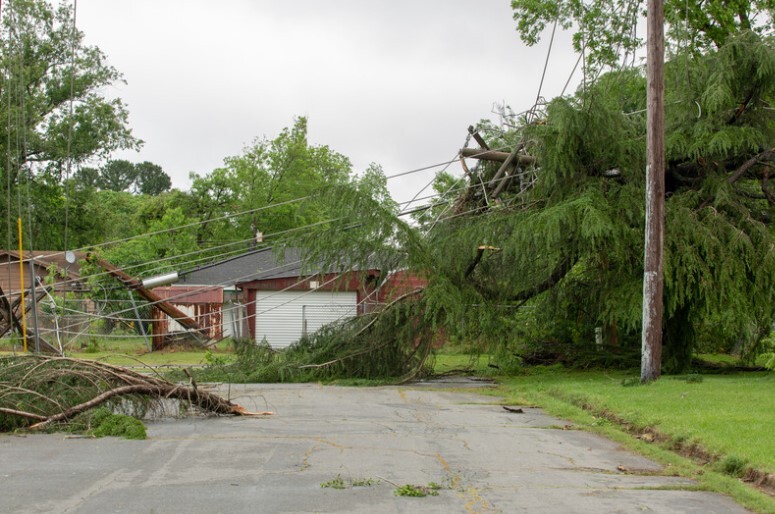ODEMHS May Newsletter
Oklahoma Department of Emergency Management sent this bulletin at 05/01/2023 09:19 AM CDTTornado Preparedness
|
As we enter the month of May, we must be prepared for the risk of severe weather. Unfortunately, the month of April served as a stark reminder of the devastation that can be caused by tornadoes. The tornadoes in McClain and Pottawatomie counties on April 19th were simply devastating. This month, we will share important information with you to keep you and your family safe from tornado events. Tornados are among the most significant weather events we face. Knowing what to do before, during, and after a tornado is key to remaining safe during these terrifying events.
You must prepare and develop a plan BEFORE severe weather strikes. There are many things to consider. First, determine how you will receive alerts and notifications about severe weather and tornadoes. In Oklahoma, we are very fortunate to have some of the very best meteorologists in the country. Tune in to your local forecasts for advanced warning that severe weather is possible. Many local media outlets have their own weather app that you can download which is very helpful. Next, consider enabling Wireless Emergency Alerts (WEAs) on your mobile phone. These are short emergency messages that come directly to your phone if you are in a targeted area. You may already have WEAs enabled, but some phones allow you to toggle those functions on and off, so check now as you develop your plan. For more information about WEAs, visit www.ready.gov/alerts. Outdoor warning sirens, if present in your area, may be another way you could be warned of an impending tornado. Just understand that these are OUTDOOR warning sirens. They are designed to warn those who may be outdoors in the area. They are not intended to be heard if you are already indoors. NOAA weather radios are another great option for receiving potentially life-saving information pertaining to severe weather and tornadoes. These radios provide continuous broadcasts of the latest weather and emergency information directly from the National Weather Service.
A second thing to consider is where you will take shelter if a tornado strikes. The safest place to be during a tornado is in an underground storm shelter or in a safe room. Before a tornado occurs, and as part of your planning process, you should identify where your safe place will be. If you do not have a storm shelter or safe room, identify a room on the lowest level of your home, preferably in the interior of the home away from windows. The idea is to put as many walls between you and the exterior as possible. Make sure your safe place is stocked with items of necessity in case you find yourself in it for an extended period. Plenty of water, typically one gallon per person per day, is recommended. Additionally, have plenty of food, medications, sanitation supplies, charging supplies for devices, extra batteries for radios or battery-powered fans, and even supplies which your pets may need while in the safe place. If you live in a mobile home, plan now for where you can go if a tornado is possible. Identify a structure of solid build where you can go. Do not wait until it is too late to go to that location. Being in a vehicle trying to get to a safe place is extremely dangerous. Vehicles, mobile homes, and recreational vehicles are no match for tornadoes. Other things you can do before a tornado event as part of your planning process is to establish a communications plan for your family. During tornadoes, it is not uncommon for cellular service to be compromised. Phone calls may be difficult or impossible to complete. Texting can sometimes be an alternative, but even that is not a guarantee. Having a family communication plan in place is also something to consider during the planning phase. Assistance with this planning can be found here. We have discussed some of the things to consider before a tornado occurs. Now, what should you do WHEN the tornado occurs? First, know the difference between a Tornado Watch and a Tornado Warning. According to the National Weather Service, a Tornado Watch means to be prepared. Tornadoes are possible in or near the watch area. A Tornado Warning means to take action! A tornado is in progress or has been indicated on radar. Once a Tornado Warning has occurred, it is time to enact your plan. Immediately go to your storm shelter, safe room, or safe place. Continue to monitor weather conditions from your safe place. If you are outdoors, seek shelter in a well-built structure immediately if you have time. If you are in a vehicle, you are not in a safe place. Go to the nearest substantial structure you can find to take shelter. Do not try to outrun a tornado in your car, however. According to the National Weather Service, if you do not have time to make it to a shelter, get down low in your car and cover your head or abandon your car and seek shelter in a low-lying ditch or ravine.
Now the storm has passed. What should you do AFTER the tornado? You should continue to monitor the weather as it is not uncommon to have multiple rounds of thunderstorms. Stay tuned for further watches or warnings to be issued. Enact your communications plan and let people know you are okay. If you do go outside to assess the damage, be aware of multiple dangers that may now exist. There could be downed power lines which could energize anything they are touching. There will be debris thrown about which means sharp objects, metal, boards with nails in them, and many other hazards will be present. There could even be natural gas or propane leaks. Structures are weakened and compromised and may not be safe to enter to check on people. Be aware of these and other dangers after a tornado event. Hopefully, these tips will help you be more prepared as we are now well into what is commonly considered storm season. Please follow us on our social media platforms for frequent tips and information on a variety of issues.
|





